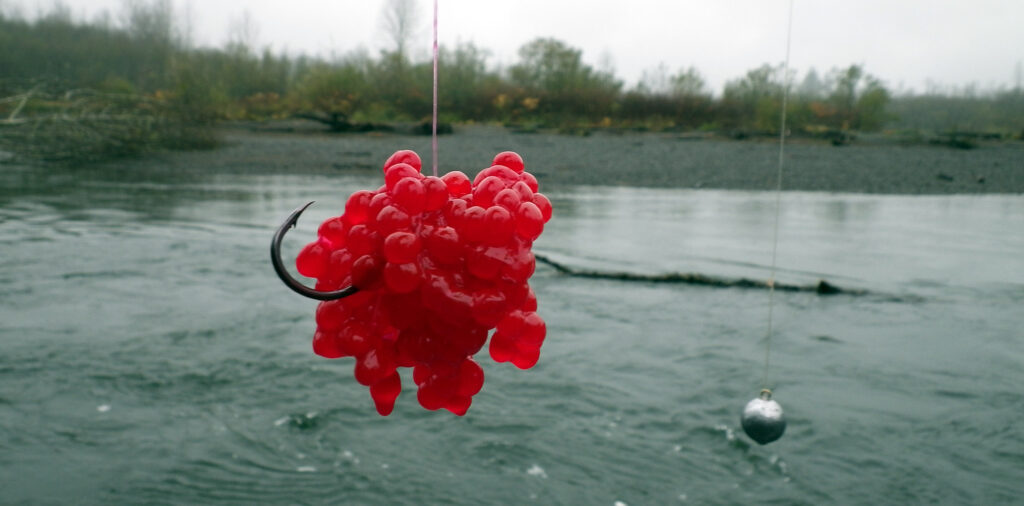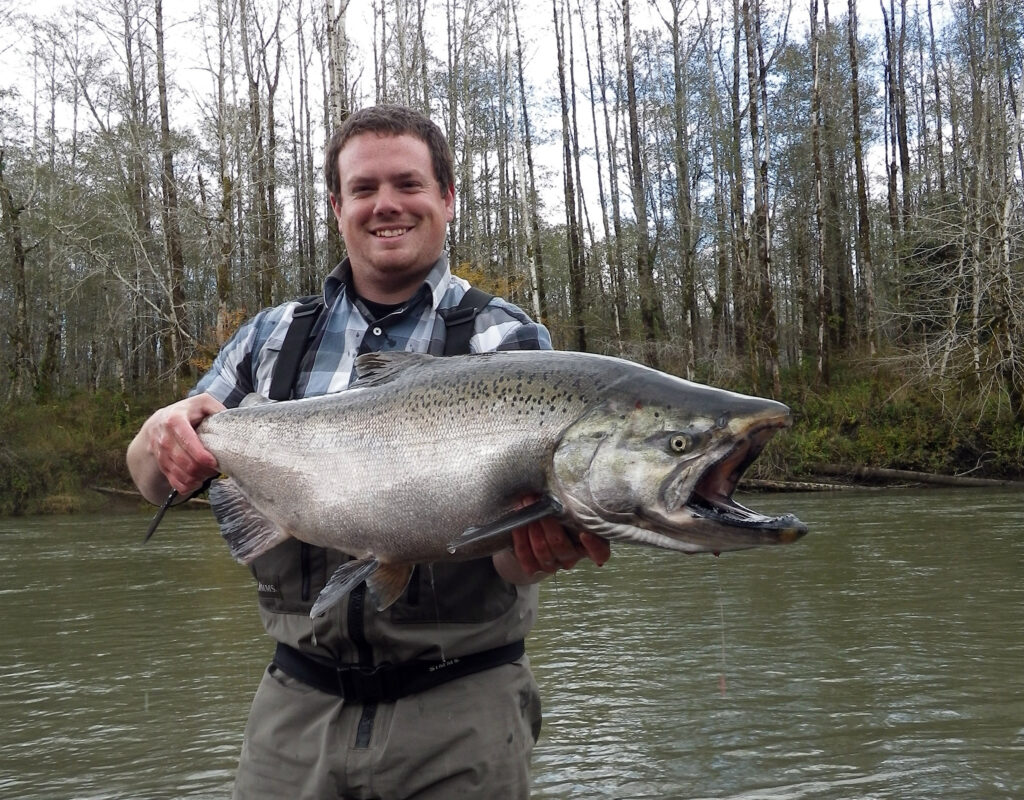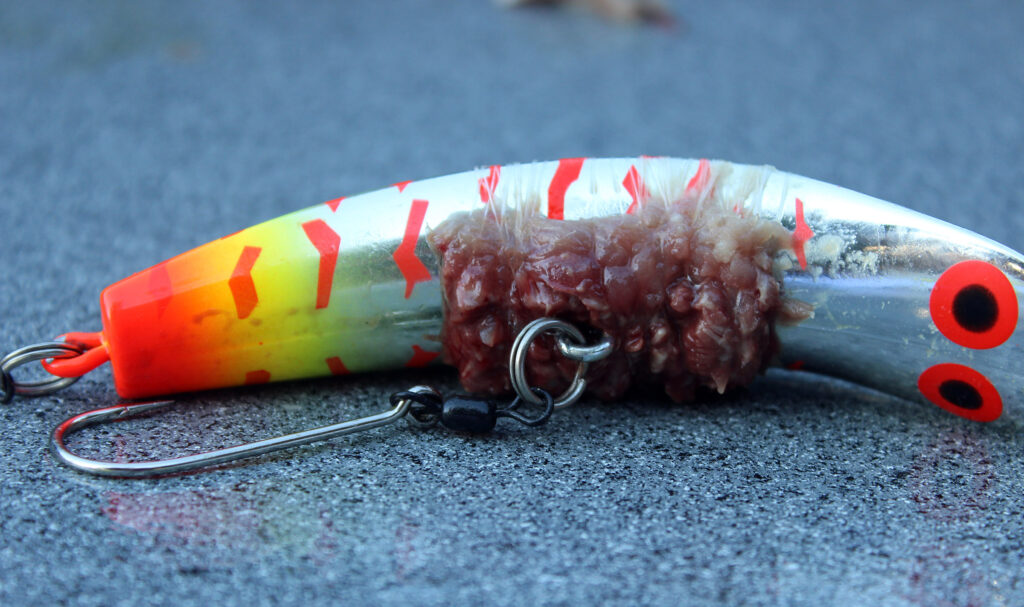Chinook salmon also known as king salmon, are the largest of the Pacific salmon species. They can reach weights over 100 pounds putting up a tremendous fight when hooked. Catching one of these mighty fish is a dream for many anglers. Here are some of the best techniques for catching chinook salmon.
Know Their Behavior
-
Chinook salmon make extensive migrations from the ocean up rivers to spawn. They are present in rivers from mid-summer through late fall depending on location.
-
In high water, chinook will be traveling upstream. Target rest spots like seams between channels or soft water before fast rapids.
-
In ideal water levels, chinook hold in 4-8 feet deep water flowing briskly. They prefer moderate speed over very slow or very fast.
-
In low water, target deep pools over 7 feet deep with swift current. Chinook seek depth and current velocity.
Use The Right Gear
-
Rod 10-12 feet, medium or medium-heavy power. The length helps casting distance and controlling big fish.
-
Reel needs at least 150 yards of 20 lb braided line or monofilament. Lever drag reels excel at stopping runs.
-
Line should be a minimum of 15 lb test. I prefer 20 lb for extra strength with abrasion resistance.
-
Leader of 15-20 lb fluorocarbon if desired, but I often go straight braid to lure/bait.
Effective Baits and Lures
-
Cured salmon roe in bright colors fished under a float. Use large clusters and scent attractants.
-
Soft plastic beads in 14-16mm, orange, red, or other bright colors Tip with roe scent soaked wool
-
Backtrolled plugs like Kwikfish and Flatfish, especially when wrapped with sardine or herring fillet.
-
Twitching jigs weighing 1/2 to 3/4 ounce. Black, purple, blue, pink, orange are good colors.
-
Backbounced eggs with light sinker so they slowly sweep the bottom in the strike zone.
-
Spinners and spinnerbaits in size 4-5. Blue Fox, Mepps, and Rooster Tail work well.
-
Wrapped bait like herring, sardine, prawns/shrimp, or sand shrimp under a float.
Technique Tips
-
Backtroll lures and baits slowly, no faster than 0.8-1 mph. Chinook are sluggish biters.
-
When float fishing, set the bait or lure 12-18 inches off the bottom. Occasional light ticks show you’re in the zone.
-
On beads and jigs, try tipping with a small piece of raw prawn or squid tentacle for extra scent.
-
Vary retrieves until you find what triggers bites – steady, varied speed, popping the rod tip, stopping completely.
-
Cover water to find fish. Chinook constantly move around structure in search of prey. Stay mobile.
Prime Spots to Find Chinook
-
Tailouts of pools where fast water slows and depth increases. Fish hold here waiting for food to be swept to them.
-
Inside corners and current seams. Slack water out of the heaviest flow gives chinook a break.
-
Below riffles and rapids. Salmon rest in calmer water after exertion passing obstacles.
-
Confluences of tributaries which bring in baitfish. Added flow and cover provide ambush points.
-
Boulders, logs, and other current breaks. Structure disrupts flow, creating eddies for chinook to hold.
Be Persistent
Chinook can be finicky biters, but you won’t catch them if your gear isn’t in the water. Follow these tips for consistent success:
-
Vary presentations until you get bit. What worked yesterday might not today.
-
Refine your technique. Faulty gear handling causes many missed strikes.
-
Grind out the slow days. The next cast could produce a 30 pounder!
-
Note areas holding fish even if they won’t bite. Return under better conditions.
-
Pay attention to patterns in bait and migrations. Run timing is key.
With the right approach, you’ll be hooked into a battling chinook salmon in no time! Follow these guidelines and fish hard until you hit the jackpot.

Backbouncing for Chinook Salmon
You have just found a spot that looks like Chinook mecca. You anchor your boat ahead of where you think Chinook will be stacking up. Or set your guys up and slowly back down current into the zone.
The anglers have a juicy cluster of eggs, with a sliding dropper to a sinker. If the lead is too heavy it won’t back down into the zone. If it’s too light the bait won’t be in the Chinook zone along the river bottom for very long. This technique is all about the slow play. You need your bait to slowly back down right in front of the fish and give them plenty of time to see, smell and munch. You drop it down, lift the rod slightly to allow the sinker to back down another foot. Hold, lift, back down, and repeat until you are past the holding zone or get bit. The bight can feel subtle.
If the process seems painstakingly slow, you are doing it right. You let them munch. Let them eat. Then once you know they are committed, you hammer back and give the biggest hook set of your life! It’s a really fun technique and one of my favorites.

Backtrolling Plugs for Chinook Salmon
Of all the boat fishing tactics, fishing with plugs is one of the most popular. A plug like a Kwikfish, Flatfish or Maglip really draws the eye of a Chinook. They wiggle and dive in the river current. Most of the time, the best fishermen will take bait wrapping thread and tie on a sliver of sardine fillet to the underside. This slows down the action of the lure and releases a heavenly scent for Chinook.

Chinook really get to biting when there is the perfect match of lure attraction and smell. Throughout most of their range, the wrapped bait of choice is sardine. But many of the best river Chinook fishermen will also use herring, anchovy, albacore tuna belly or sand shrimp wraps. I usually don’t deviate from sardines, but it’s worth following the local trend. Wherever you may be back trolling plugs for Chinook.

Life of the Chinook and Coho Salmon and How to Catch One Fishing
FAQ
What is the best bait for Chinook Salmon?
Salmon eggs are the top choice for bait, although sand shrimp are very popular for chinook salmon. Some anglers like to fish both at the same time.
How do you catch Chinook Salmon?
Live bait, such as roe, or cut bait, is usually successful, but flashtrap spinners can also work well. Salmon live in low lighting conditions, so it can help to have something flashy on the bait to attract the salmon in the deeper waters. Overcast days are often better fishing weather than bright and sunny days.
What time of day is best to fish for Chinook?
Conclusion. Catching king salmon is an exhilarating experience, but timing is key to your success. Early mornings and late evenings, when the water is cooler and the fish are more active, offer the best opportunities to land these prized fish.
Are Chinook hard to catch?
“Other than maybe a tuna, Chinook are the hardest-fighting fish you could ever hook,” Ard said.
What is the best chinook salmon fishing technique?
Bobber fishing with cured salmon eggs is one of the best Chinook Salmon fishing techniques in the river’s deepest and slowest pools. Chinook will often hold in those deep spots. Most of the time, you want to have your bait as close to the river bottom as possible.
Can You Fly FISH for Chinook salmon?
The choice of gear for catching chinook salmon is quite similar to other species of Pacific salmon. But it is worth considering that this is the largest species of salmon in this region. Fly fishing for large chinook salmon is considered not easy. This is due to salmon habitat in rivers with high, often changing water levels and fishing conditions.
Are chinook salmon a good catch?
When Chinook Salmon return to the river, they are an exciting catch! This one was caught anchor fishing with a Kwikfish on Washington’s Olympic Peninsula. Chinook Salmon are the king of our rivers. They are the largest salmon we catch on the Pacific Coast.
Where to fish for Chinook salmon?
Coastal Rivers are a great place to fish for Chinook Salmon. They usually flood in from late summer through fall. Of all the boat fishing tactics, fishing with plugs is one of the most popular. A plug like a Kwikfish, Flatfish or Maglip really draws the eye of a Chinook. They wiggle and dive in the river current.
How do you catch a Chinook salmon?
Most of the time, the best fishermen will take bait wrapping thread and tie on a sliver of sardine fillet to the underside. This slows down the action of the lure and releases a heavenly scent for Chinook. Ian Winder found a trophy Chinook Salmon by back trolling a K15 Kwikfish wrapped with a sardine fillet.
Can a Chinook salmon slide into the sea?
Juveniles can slide into the sea only in the second year of life. Fish is considered one of the most interesting trophies of the Pacific coast. Due to its size and tenacity, Chinook salmon is a worthy competitor for fly fishing and spinning. The choice of gear for catching chinook salmon should be taken seriously.
